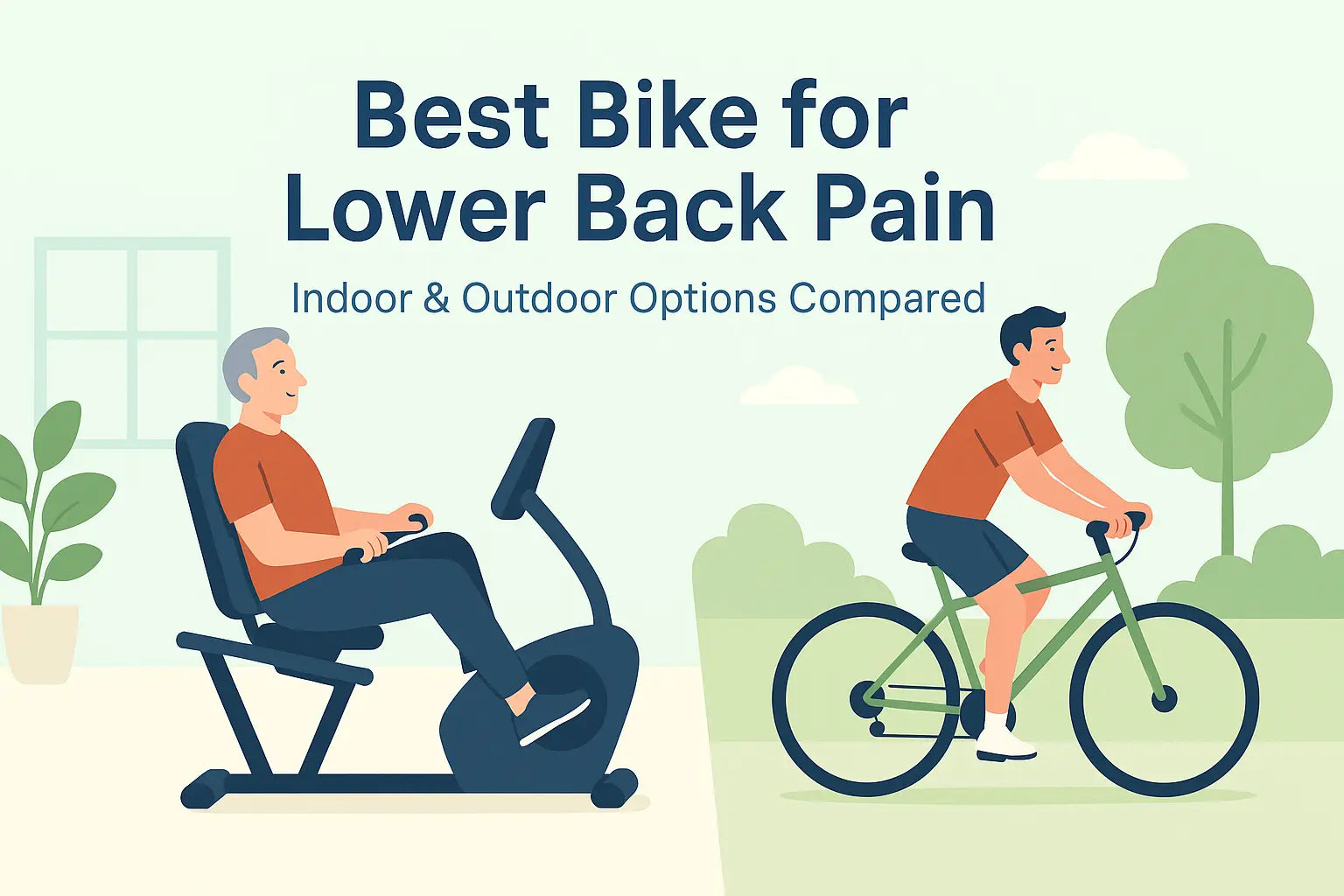In recent years, the recumbent bike has steadily grown in popularity, especially among seniors and people recovering from injury. With its unique reclined design, the recumbent exercise bike offers seven major benefits that make your workouts safer, more comfortable, and more consistent.
As a product researcher at Vanswe, I’m excited to write this article at the invitation of our website team, where we’ll explore the full range of recumbent bike advantages—from physical and mental health advantages to the practical value they bring to everyday home users.
Key Benefits of Recumbent Bikes
Recumbent bikes benefit users by reducing joint strain, supporting the lower back, improving cardiovascular health, and providing a comfortable, low-impact workout suitable for all fitness levels.
1. Low Impact & Joint Friendly
Recumbent bikes provide a smooth, joint-friendly motion. The seated position reduces the load on your knees [1] and supports your back [2], making it an ideal low impact cardio machine for seniors with arthritis or people recovering from injury.
2. Cardiovascular Health
Regular use of a recumbent bike provides a heart-pumping, aerobic exercise that can help lower blood pressure, boost cardiovascular endurance, and reduce the risk of heart disease [3].
3. Mental Health
According to the Centers for Disease Control and Prevention [4], regular physical activity, such as recumbent bike workouts, not only boosts cardiovascular fitness but also helps reduce anxiety and depression.
4. Weight Loss
The reclined position allows for longer, more comfortable sessions—key for burning calories over time. Many users find themselves sticking to a regular workout schedule simply because the ride feels enjoyable.
5. Reduce Fall Risk
Recumbent bike exercise can strengthen lower body muscles, which in turn helps reduce the risk of falls. According to Journal of Biomechanical Engineering, pedaling on a recumbent bike activates lower body muscle groups:
-
Glutes and hamstrings (from the push-back motion)
-
Quadriceps (from extending the knees)
-
Calves (during the full pedal stroke)
-
Core and hip flexors (for stabilization)
6. Step Through Design
The low step-through frames make recumbent exercise bikes easy to get on and off, which is a major benefit for seniors or users with mobility limitations. Reduce the fear of falling when older adults use a stationary bike.
7. Comfort
A recumbent bike is designed with a wide seat and supportive backrest, making the riding position far more comfortable than traditional exercise bikes. This comfort helps users ride longer and turn exercise into a sustainable habit.
Pros and Cons of Recumbent Bikes
Pros
- Quiet – The magnetic system produces less than 15 dB of noise, quieter than your breathing during exercise.
- Compact – A home recumbent bike is small enough to fit easily beside a bed or sofa.
- Maintenance-Free – Requires almost no upkeep and can be used for years.
Cons
- Lower Calorie Burn – Burns fewer calories per minute, but comfort makes it easier to stay consistent.
- Limited Upper Body – Mainly works the legs unless arm exercisers are included.
- Not for HIIT – Seating position isn’t suited for sprints, though this rarely matters for seniors.
Conclusion:
Recumbent bikes combine comfort, safety, and accessibility, making them one of the most practical cardio machines for seniors and people recovering from injury. From protecting joints and supporting the back to improving heart health, mental well-being, and reducing fall risk, their benefits extend well beyond simple exercise.
Related Articles:
- The Benefits of Elliptical Recumbent Bike
- Recumbent Bike After Knee Replacement: A Safe and Effective Rehab Tool
- Can a Recumbent Bike Help Hip Pain
- Recumbent Bike vs Treadmill: Which Is Better
- Recumbent Bike vs Upright Bike: Which is Better
- Recumbent Bike vs Elliptical: Which Is Better
- Best Recumbent Exercise Bikes of 2025
FAQ
Who Should Use a Recumbent Bike?
A recumbent bike is a great choice for seniors, beginners, people with knee or back issues, overweight users, and anyone recovering from injury. Its reclined seat and back support make workouts safer and more comfortable, while the low-impact motion protects your joints. If you’re looking for a joint-friendly way to improve cardiovascular health at home, this type of stationary bike is ideal. You can learn more in our full guide: Who Should Use a Recumbent Bike?
What Are the Disadvantages of a Recumbent Bike?
While recumbent bikes are comfortable and joint-friendly, they also come with some drawbacks. They generally burn fewer calories than upright or spin bikes, mainly work the lower body with limited upper-body engagement, take up more floor space, and aren’t ideal for high-intensity interval training. These disadvantages make them less suitable for people seeking maximum calorie burn or compact equipment. You can read the full breakdown here: What Are the Disadvantages of a Recumbent Bike?.
Reference
- Crossley, C. B., Diamond, L. E., Saxby, D. J., de Sousa, A., Lloyd, D. G., Che Fornusek, & Pizzolato, C. (2024). Joint contact forces during semi-recumbent seated cycling. Journal of biomechanics, 168, 112094. https://doi.org/10.1016/j.jbiomech.2024.112094
- Hakansson, N. A., & Hull, M. L. (2005). Functional roles of the leg muscles when pedaling in the recumbent versus the upright position. Journal of biomechanical engineering, 127(2), 301–310. https://doi.org/10.1115/1.1865192
- American College of Cardiology. (2019, February 20). Cardiorespiratory fitness and long-term mortality. https://www.acc.org/latest-in-cardiology/articles/2019/02/20/08/11/cardiorespiratory-fitness-and-long-term-mortality
- Centers for Disease Control and Prevention. (2023, October 3). Boost your brain health with physical activity. U.S. Department of Health and Human Services. https://www.cdc.gov/physical-activity/features/boost-brain-health.html
Latest Articles







